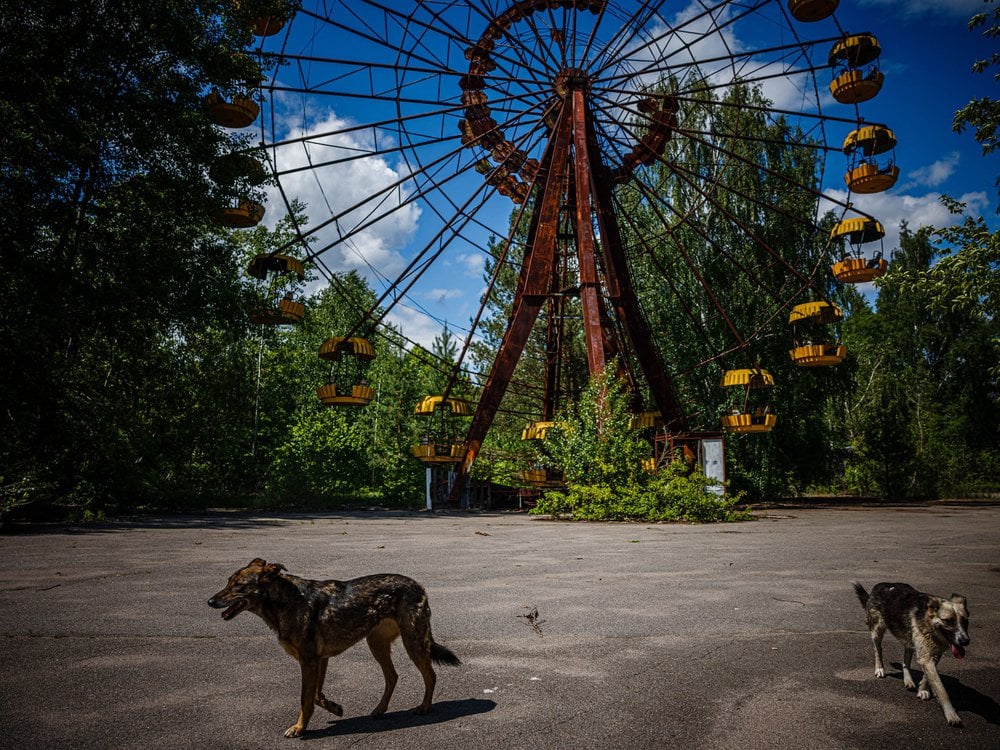Why Scientists Are Studying the Stray Dogs Living at Chernobyl
A new study is a first step toward understanding how radiation exposure might affect DNA

In April 1986, an explosion and ensuing fires at the Chernobyl nuclear power plant, at the time part of the Soviet Union and now in Ukraine, blasted radioactive material into the environment.
Following the disaster, officials evacuated the entire town of Pripyat, located just a couple of miles from the power plant. Today, an area with a roughly 19-mile radius surrounding the plant is essentially uninhabited by humans—but it hosts hundreds of dogs.
In a paper published last week in the journal Science Advances, researchers studied the genomes of 302 of these dogs, which are largely descended from pets that residents left behind as they fled during the disaster. For generations, the animals have lived in the plant itself, slept in abandoned buildings and begged cleanup crews and tourists for scraps.
The scientists discovered that the power plant dogs were genetically distinct from those that lived miles away from the site. Canines dwelling in the plant were more inbred and primarily German shepherds, while the dogs in nearby Chernobyl City and Slavutych, located 9 and 28 miles away from the disaster site, respectively, were more of a mix of modern breeds that resemble dogs elsewhere, writes the Atlantic’s Katherine J. Wu.
Scientists have no evidence yet that radiation caused the genetic differences between the dogs in these different areas, as Jim Smith, an environmental scientist at the University of Portsmouth in England who has studied the Chernobyl accident and did not contribute to the research, tells Science News’ Meghan Rosen. But the study is the start of an effort to better understand how long-term exposure to low levels of radiation can affect animals’ genetics—and how they might survive in such harsh conditions.
“We had to characterize these different populations as the necessary first step in order to do the experiment we want to do next, which is to find out how [the Chernobyl dogs] have survived in this hostile environment of radiation, cold temperatures and limited food,” Elaine Ostrander, a co-author of the study and a geneticist at the National Institute of Health who studies dog genomes, tells New Scientist’s Alice Klein.
The initial explosions at the Chernobyl plant killed between two and 50 people, but thousands more likely died of the long-term effects of radiation exposure in the following years. Radiation from the disaster was even detected in North America. And near the plant, researchers previously found that birds, bank voles and bees suffered from health problems, per the Atlantic.
In the study, the scientists took blood samples from 132 dogs near the power plant, 154 strays in Chernobyl City and 16 strays in Slavutych and sequenced their genomes. They found the dogs came from 15 different families, with some spread over large areas and others more confined.
The researchers also discovered that the power plant dogs and Chernobyl City dogs didn’t seem to interbreed much, writes the New York Times’ Emily Anthes.
Parts of the power plant have 10 to 400 times the levels of radioactive cesium-137 as Chernobyl City does, according to the study. But it won’t be easy for scientists to figure out which genetic differences might be caused by this exposure versus other factors, David Brenner, a radiation physicist at Columbia University who didn’t contribute to the research, tells Nature News’ Freda Kreier.
The team plans to do more studies on these canines, which they hope will reveal genetic mutations associated with surviving in harsh, radioactive environments. Future insights into these dogs could help protect people against radiation exposure, lead to cancer treatments or inform space agencies on how to handle cosmic radiation, per New Scientist.
This current study is a first step in learning how exposure to higher levels of radiation affects large mammals, Kari Ekenstedt, a veterinarian at Purdue University who was not involved in the research, tells Laura Ungar of the Associated Press.
“We have so much to learn from these animals,” Ostrander says to Nature News.

